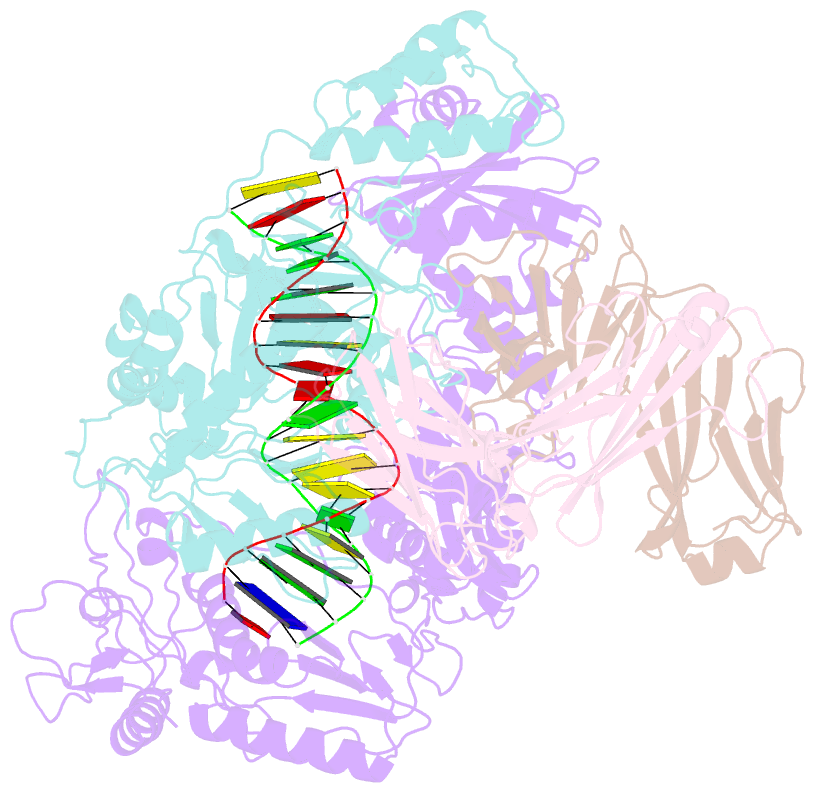Summary information and primary citation
- PDB-id
- 2hmi; SNAP-derived features in text and JSON formats;
DNAproDB
- Class
- immune system-DNA
- Method
- X-ray (2.8 Å)
- Summary
- Hiv-1 reverse transcriptase-fragment of fab 28-DNA complex
- Reference
- Ding J, Das K, Hsiou Y, Sarafianos SG, Clark Jr AD, Jacobo-Molina A, Tantillo C, Hughes SH, Arnold E (1998): "Structure and functional implications of the polymerase active site region in a complex of HIV-1 RT with a double-stranded DNA template-primer and an antibody Fab fragment at 2.8 A resolution." J.Mol.Biol., 284, 1095-1111. doi: 10.1006/jmbi.1998.2208.
- Abstract
- The structure of human immunodeficiency virus type 1 (HIV-1) reverse transcriptase (RT) complexed with a 19-mer/18-mer double-stranded DNA template-primer (dsDNA) and the Fab fragment of monoclonal antibody 28 (Fab28) has been refined at 2.8 A resolution. The structures of the polymerase active site and neighboring regions are described in detail and a number of novel insights into mechanisms of polymerase catalysis and drug inhibition are presented. The three catalytically essential amino acid residues (Asp110, Asp185, and Asp186) are located close to the 3' terminus of the primer strand. Observation of a hydrogen bond between the 3'-OH of the primer terminus and the side-chain of Asp185 suggests that the carboxylate of Asp185 could act as a general base in initiating the nucleophilic attack during polymerization. Nearly all of the close protein-DNA interactions involve atoms of the sugar-phosphate backbone of the nucleic acid. However, the phenoxyl side-chain of Tyr183, which is part of the conserved YMDD motif, has hydrogen-bonding interactions with nucleotide bases of the second duplex base-pair and is predicted to have at least one hydrogen bond with all Watson-Crick base-pairs at this position. Comparison of the structure of the active site region in the HIV-1 RT/dsDNA complex with all other HIV-1 RT structures suggests that template-primer binding is accompanied by significant conformational changes of the YMDD motif that may be relevant for mechanisms of both polymerization and inhibition by non-nucleoside inhibitors. Interactions of the "primer grip" (the beta12-beta13 hairpin) with the 3' terminus of the primer strand primarily involve the main-chain atoms of Met230 and Gly231 and the primer terminal phosphate. Alternative positions of the primer grip observed in different HIV-1 RT structures may be related to conformational changes that normally occur during DNA polymerization and translocation. In the vicinity of the polymerase active site, there are a number of aromatic residues that are involved in energetically favorable pi-pi interactions and may be involved in the transitions between different stages of the catalytic process. The protein structural elements primarily responsible for precise positioning of the template-primer (including the primer grip, template grip, and helices alphaH and alphaI of the p66 thumb) can be thought of functioning as a "translocation track" that guides the relative movement of nucleic acid and protein during polymerization.





